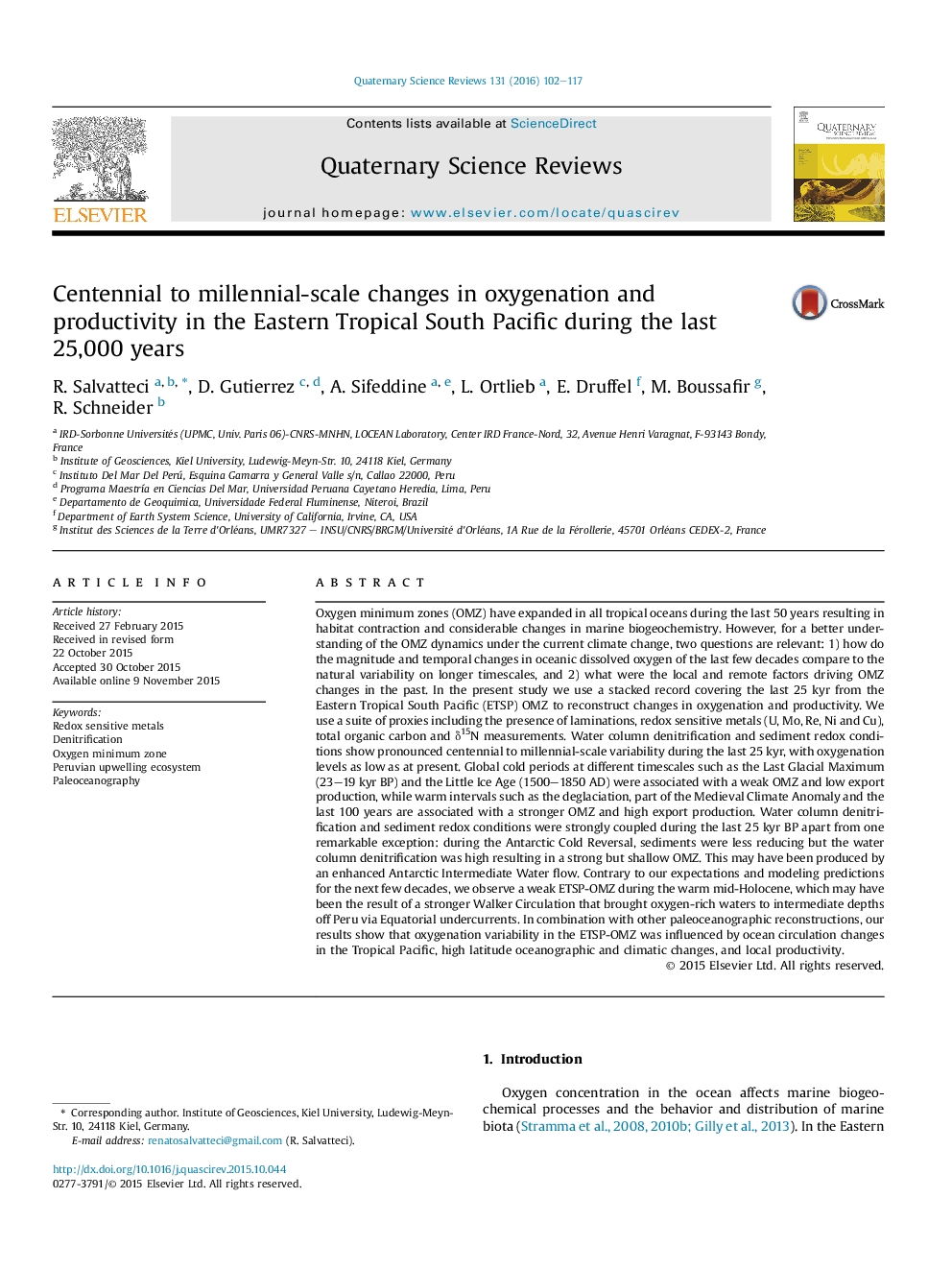| کد مقاله | کد نشریه | سال انتشار | مقاله انگلیسی | نسخه تمام متن |
|---|---|---|---|---|
| 4735754 | 1357977 | 2016 | 16 صفحه PDF | دانلود رایگان |
• We reconstructed 25 kyr of oxygenation and productivity changes off Peru.
• We used the presence of laminations, redox sensitive metals and δ15N measurements.
• OMZ intensity and productivity showed pronounced temporal variability.
• Tropical and extratropical forcings were the main drivers of OMZ intensity changes.
Oxygen minimum zones (OMZ) have expanded in all tropical oceans during the last 50 years resulting in habitat contraction and considerable changes in marine biogeochemistry. However, for a better understanding of the OMZ dynamics under the current climate change, two questions are relevant: 1) how do the magnitude and temporal changes in oceanic dissolved oxygen of the last few decades compare to the natural variability on longer timescales, and 2) what were the local and remote factors driving OMZ changes in the past. In the present study we use a stacked record covering the last 25 kyr from the Eastern Tropical South Pacific (ETSP) OMZ to reconstruct changes in oxygenation and productivity. We use a suite of proxies including the presence of laminations, redox sensitive metals (U, Mo, Re, Ni and Cu), total organic carbon and δ15N measurements. Water column denitrification and sediment redox conditions show pronounced centennial to millennial-scale variability during the last 25 kyr, with oxygenation levels as low as at present. Global cold periods at different timescales such as the Last Glacial Maximum (23–19 kyr BP) and the Little Ice Age (1500–1850 AD) were associated with a weak OMZ and low export production, while warm intervals such as the deglaciation, part of the Medieval Climate Anomaly and the last 100 years are associated with a stronger OMZ and high export production. Water column denitrification and sediment redox conditions were strongly coupled during the last 25 kyr BP apart from one remarkable exception: during the Antarctic Cold Reversal, sediments were less reducing but the water column denitrification was high resulting in a strong but shallow OMZ. This may have been produced by an enhanced Antarctic Intermediate Water flow. Contrary to our expectations and modeling predictions for the next few decades, we observe a weak ETSP-OMZ during the warm mid-Holocene, which may have been the result of a stronger Walker Circulation that brought oxygen-rich waters to intermediate depths off Peru via Equatorial undercurrents. In combination with other paleoceanographic reconstructions, our results show that oxygenation variability in the ETSP-OMZ was influenced by ocean circulation changes in the Tropical Pacific, high latitude oceanographic and climatic changes, and local productivity.
Journal: Quaternary Science Reviews - Volume 131, Part A, 1 January 2016, Pages 102–117
